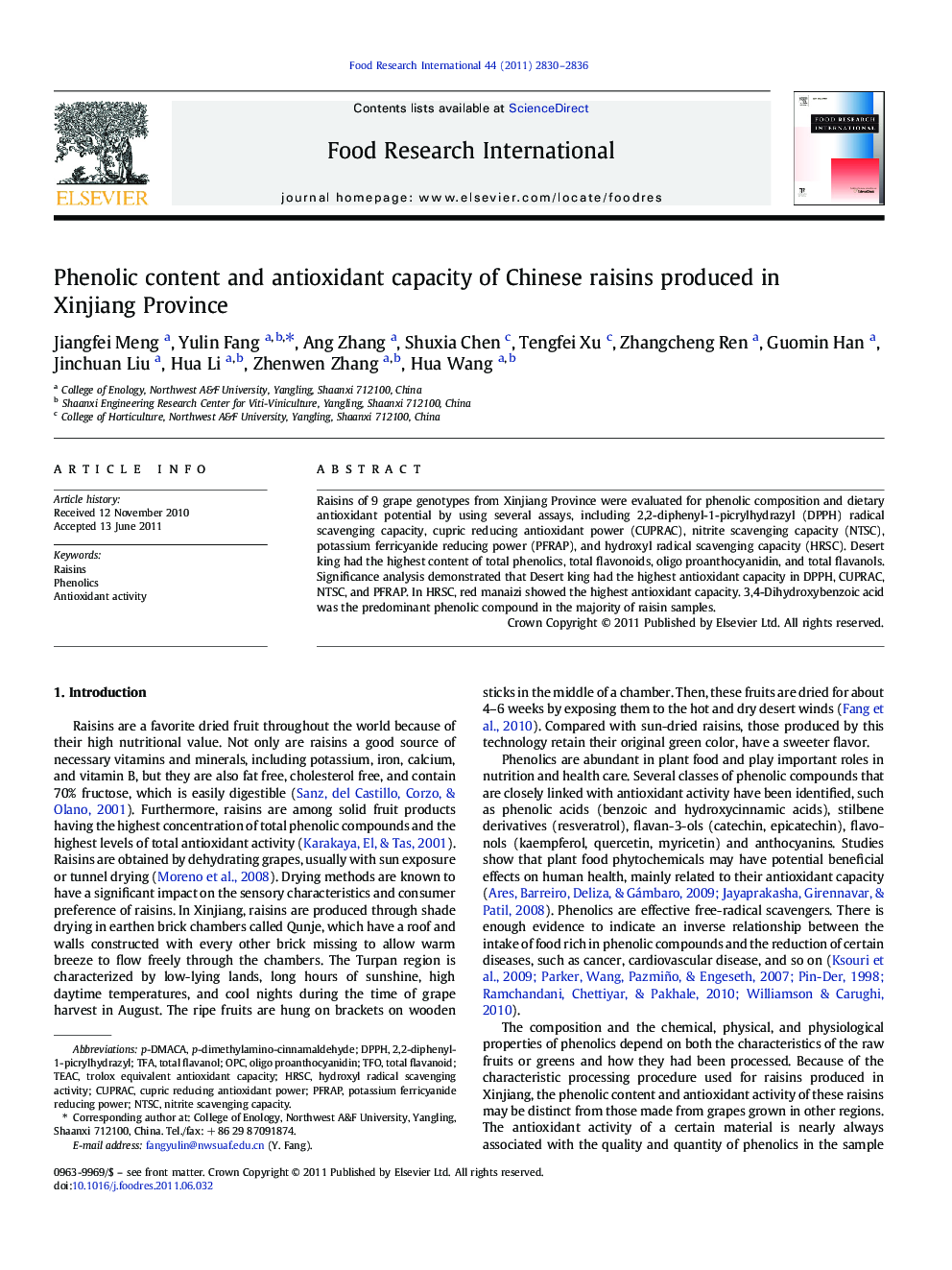| Article ID | Journal | Published Year | Pages | File Type |
|---|---|---|---|---|
| 4562107 | Food Research International | 2011 | 7 Pages |
Raisins of 9 grape genotypes from Xinjiang Province were evaluated for phenolic composition and dietary antioxidant potential by using several assays, including 2,2-diphenyl-1-picrylhydrazyl (DPPH) radical scavenging capacity, cupric reducing antioxidant power (CUPRAC), nitrite scavenging capacity (NTSC), potassium ferricyanide reducing power (PFRAP), and hydroxyl radical scavenging capacity (HRSC). Desert king had the highest content of total phenolics, total flavonoids, oligo proanthocyanidin, and total flavanols. Significance analysis demonstrated that Desert king had the highest antioxidant capacity in DPPH, CUPRAC, NTSC, and PFRAP. In HRSC, red manaizi showed the highest antioxidant capacity. 3,4-Dihydroxybenzoic acid was the predominant phenolic compound in the majority of raisin samples.
Research highlights► Raisins from Xinjiang, China, were studied for phenolics and antioxidant activity. ► Antioxidant activity was evaluated by using five methods with different mechanisms. ► Desert king had the highest content of phenolics. ► Desert king had the highest antioxidant capacity. ► 3,4-Dihydroxybenzoic acid was the predominant phenolics in the majority of raisins.
